International SEO: What to Keep in Mind
- Home
- Knowledge Sharing
- International SEO: What to Keep in Mind
What is International SEO?
When you've already achieved remarkable results with local SEO and your product or service shows potential demand beyond your country's borders, international SEO comes into play.
An international SEO strategy is a set of actions aimed at increasing your website's visibility on search engine results pages (SERPs) for different languages and countries.
The goal of this strategy is to adapt your website so that it resonates with a global audience.
How to Prepare Your Business for the Transition from Local to International SEO
To make a mark on the international market, careful preparation of a global SEO plan is essential. Let's break down what needs to be done first, point by point.
International SEO Checklist
- Conduct Research to Identify Target Regions and Languages.
- Adapt Keyword Research to Include International Search Queries.
- Create Content for Other Languages.
- Update Website Structure and Navigation for a Multilingual and Multinational Audience.
- Implement Hreflang Tags.
Step-by-step planning is crucial to a successful transition. Since countless companies compete globally and the difficulty of achieving high rankings for relevant keywords continues to increase, a comprehensive strategy becomes necessary.
Defining Target Regions
To successfully implement an international SEO strategy, thorough research is essential to determine target regions and languages. These studies involve analyzing data on search queries, potential audiences in different countries and languages, and the competitive landscape.
Studying competitors can simplify your path. If you offer a similar product, you can identify which countries their website is optimized for, and incorporate their targeting into your strategy.
It is essential to consider each market's cultural nuances, user preferences, and competitive environment. Based on the gathered data, you can formulate a strategy optimally tailored to the requirements and needs of the international audience, effectively attracting traffic and enhancing brand visibility in various regions of the world.
Adapting Keyword Research
When adapting keywords for global SEO, conducting keyword research for specific regions is crucial. This involves not only translating keywords into local languages but also considering local terminology and user preferences.
For example, terms and phrases commonly used in one country may be completely unfamiliar or have different meanings in other regions. Therefore, it's important to pay attention to the terminological peculiarities of each region when selecting keywords.
This not only helps attract target audiences from different parts of the world but also ensures higher conversion rates since users will find what they're looking for using familiar terms and phrases.
Creating Content for Other Languages
When creating content in other languages, it's crucial to not just translate the text, but also adapt it to a specific region. This means considering the style, mentality, and overall atmosphere of that region.
For example, what sounds interesting or appropriate in one country may be entirely irrelevant or even offensive in another.
Therefore, it's essential to study the cultural nuances of the audience and understand which themes and approaches will be most effective for that region. Incorporating local expressions, patterns, and atmosphere can make the content more appealing and understandable to the audience, and even increase its success.
Update Website Structure and Navigation
Updating the structure and navigation of a website for a multilingual and multinational audience requires careful consideration.
Firstly, it's essential to create a clear and intuitive structure that accommodates different languages and regions. This may involve creating separate sections or pages for each language or region, and using language and geographic region switches for user convenience.
Moreover, it is crucial to ensure ease of navigation on the website for all users, regardless of their language preferences or location. This includes using language and geographic filters in the menu, clear links and labels on pages, and breadcrumbs for easy navigation between website sections.
For successful website structure and navigation updates, it's also important to test and optimize it for different languages and regions. This will ensure that users can easily find the information they need and interact with the website regardless of language or location.
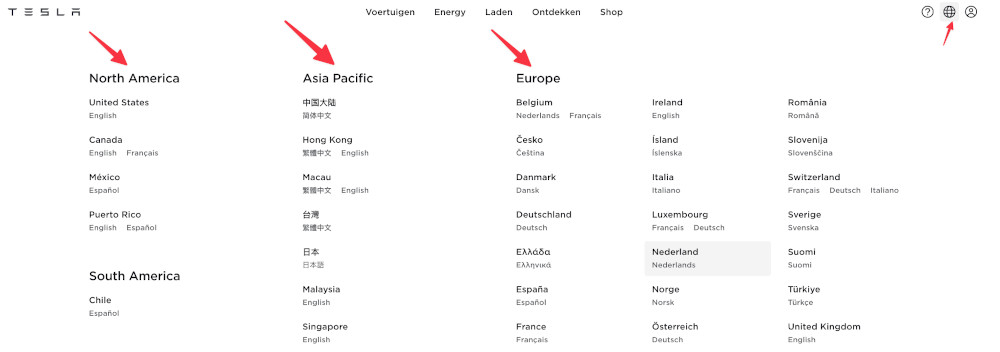
Without the Hreflang Tag, Your Website is Not Multilingual
Without Hreflang tags , your multilingual content may encounter significant SEO issues. These tags are crucial tools for indicating to search engines the various language versions of your content, ensuring proper indexing and display of pages in search results for relevant audiences.
Failure to add Hreflang tags can lead to search engines misinterpreting your multilingual content, resulting in content duplication, low page rankings, and incorrect search result displays for users from different countries and language groups. Therefore, including Hreflang tags is vital for optimizing multilingual content and ensuring its successful promotion in search engines.
Here's an example of how you can add Hreflang tags to pages on your website:
HTML Page Code .
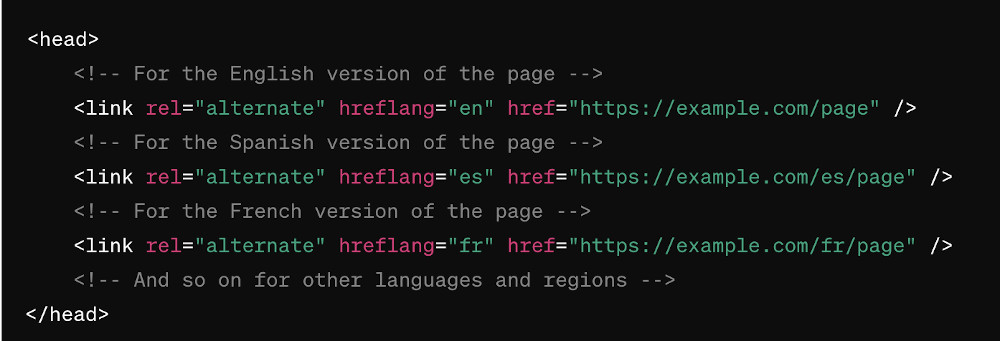
XML Sitemap.
If you have an XML sitemap, you can also add Hreflang tags directly to the XML markup.

WordPress.
If your website runs on WordPress, there are plugins available that automatically add Hreflang tags. Some popular plugins include Yoast SEO , WPML , and Polylang .
Additional Recommendations:
- Make sure each version of the page contains links to all other versions of that page.
- Double-check the accuracy of URLs and language codes.
- After adding Hreflang tags, it's recommended to test them using webmaster tools to ensure they are functioning correctly.
International SEO best practices
Now that we have reviewed the components that make an effective international SEO campaign. Let's examine Tesla's website and outline examples of international SEO in action:
URL Structure
The Tesla website has various localized versions for different countries and regions. For example:
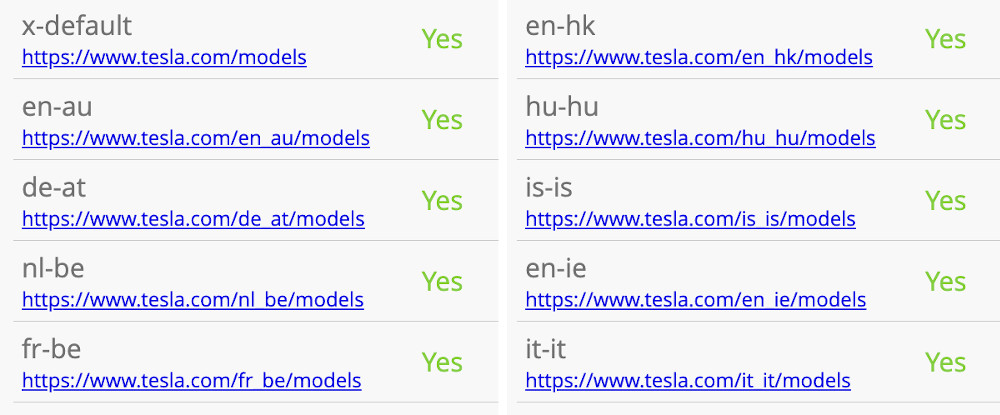
Hreflang Tags
Each page on the Tesla website contains appropriate Hreflang tags, indicating other language versions of that page. For example:
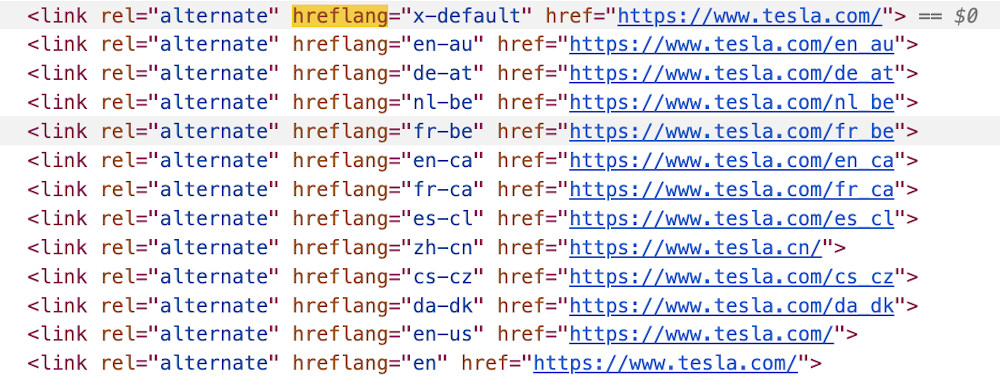
Localized Content
Content on each localized version of the Tesla website is adapted for its respective audience, including vehicle availability, purchase terms, etc.

International Link Building Strategy
Tesla actively employs an international linkbuilding strategy, gaining backlinks from relevant and authoritative websites in different countries and regions. This strategy includes press releases about international events and Tesla-related activities.
Geographical Tags and Metadata
Metadata on each page of the Tesla website is optimized for its local audience, including geographical keywords, regional schema markup , and local contact information.
These practices help Tesla attract more potential customers from different countries and language groups by optimizing its website for an international audience.
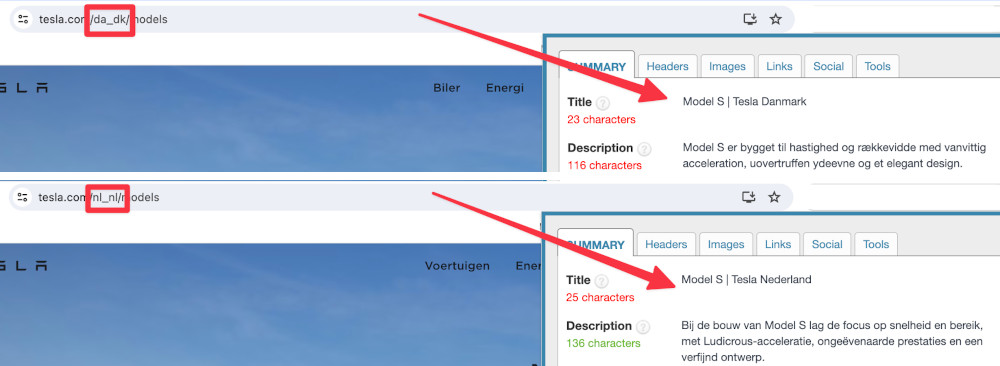
Driving Global Success
International Search Engine Optimization (SEO) encompasses a multifaceted approach aimed at reaching global audiences effectively. By conducting thorough research to identify target regions and languages, adapting keyword strategies for international search queries, creating localized content, updating website structure and navigation, and implementing Hreflang tags, businesses can enhance their online visibility and engagement across borders.
Looking to dominate Google search worldwide? Get in touch with our SEO experts and let's elevate your business to the top of international search results together!






